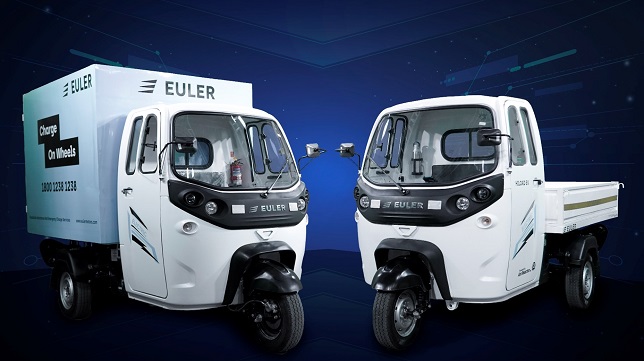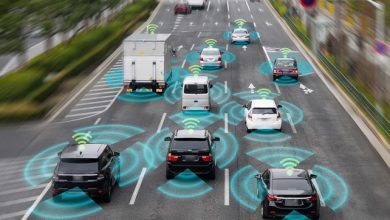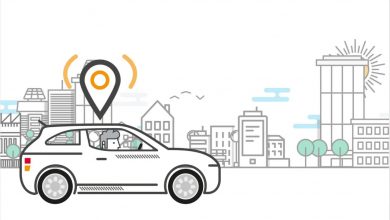Tampering versus non-tampering – how telemetry devices can solve for more efficient fleet management

Telematics is becoming an important aspect of the EV industry as a standard norm/default setting, especially for the commercial segment. Undoubtedly, the software is critical in driving vehicle economics and optimizing fleet operations. Commercial EVs are already taking advantage of this technology, and deploying it for battery and vehicle efficiency.
However, markets like India are one of the trickiest for telematics to function, given the varied and abrupt road and driver patterns, lack of clearly marked lane systems, and erratic traffic situations amongst others. These scenarios, often inconsistent and unpredictable, make the job of a telemetry device that leads the telematics function complex.
One of these challenges is to assess and deploy when the vehicle or telemetry device tampering occurs. Tampering refers to any interference with the vehicle that can be associated with vehicle or cargo theft, which endangers vehicle safety. A telemetry device is a tracker that can help in this regard, and help relay information back to the cloud if this happens.
However, given the road and traffic scenarios in India many a time this telemetry device itself gets disrupted just during normal vehicle operations, say driving through a highly rough road or when encountering severe collision. This attached device upon impact, often reports this as a criminal or fraudulent activity, just because it has been configured to do so. While this is a clear case of non-tampering, it may cause an unnecessary vehicle to shut down, and lock the vehicle, adding to the complexity of the tech implementation.
Often in many scenarios, automated sensors provide data, which generalizes the cases and raises an alarm for device or vehicle tampering. While this may be the case in some, there are times when the telemetry device is often disconnected due to collision detections, reckless driving, driving via uneven terrains, over speeding. These may not warrant preventive actions such as triggering alarms or shutting the vehicle. In some cases, the presence of primary and secondary tracking devices can help monitor events to maximize output, whereas the second can act as a backup as the former goes offline.
These data inaccuracies can be solved by multiple-level checks/ input through the telemetry device
Inside a commercial EV, a telemetry device is installed at a secure place where its task is to capture all the vehicle data, relay it to a cloud, and then to the vehicle operator/ fleet manager for remote fleet tracking. The device is also a single point of failure, the absence of which one cannot determine the whereabouts of the vehicle or truck during road operations. The device also requires exposure to an open sky, to connect to the cloud, which implies it has to be placed on the vehicle, and not inside it. Given its location, often a metallic enclosure is used like a seal to protect the device from outside wear and tear.
In case of road fluctuation (which may not necessarily be tampering), a shutdown may occur, as a preventive measure. To avoid this issue, a multiple-level check via the telemetry device can help assess the scenario or prevent disruption of unnecessary operations on the road.
- The first input is to check for the voltage supply to the telemetry device. Often, a disrupted / or disconnected wire harness can cut the voltage supply to the device, which may occur during on-road operations.
- Further, the external signal works as a heartbeat to this alert system and acts as an indicator of a healthy and live connection.
- If these points go offline, an additional IMU sensor is knowing navigation and activity recognition patterns. The IMU sensor is meant for elevation and data for the inference pipeline which helps correlate decisions of tampering at the local ECU (Electronic Control Unit).
Accuracy of data to make the right decision
While remote fleet monitoring and control is an excellent tool to drive higher profits and efficiencies in commercial EVs, the Indian market needs intelligent tracking solutions connected to monitor very nuanced driver and on-road dynamics and anomalies. A device unplugging is seldom a black-and-white scenario, and companies need to deploy the right technology to address the gray that stands in between.
The issue with telematics devices today – they are not able to differentiate between tampering of devices vs non-tampering of device situations in EVs – leading to inefficiency due to unnecessary vehicle shutdown
start with
- – they are not able to differentiate between tampering of device and non-tampering of device situation in EVs – leading to inefficiency due to unnecessary vehicle shutdown
- What do we mean by situations where tampering happens – examples
- What do we mean by situations where tampering does not happen – examples
- How do we solve for this
Messages to drive
- India presents very complex challenges for telematics to function given the highly unpredictable traffic and driver scenarios
- Tampering versus non-tampering scenarios – one of the biggest problems for CV OEMS to solve (where often tampering isn’t the issue, but it is the telemetry device getting unplugged due to rough driving or terrain)
- This creates data inaccuracies and leads to unnecessary vehicle shut down – which can be solved by multiple level checks/ input through the telemetry device
Author:

Poorvak Kapoor
AVP, Vehicle Intelligence
Euler Motors
Poorvak’s responsibilities include defining requirements and designing cloud infrastructure for connected vehicles- over-the-air updates (OTA), remote commands, remote telemetry, and IoT. He is part of the engineering leadership team at the company. He comes armed with an overall experience of around a decade across diverse organizations like Cube26 Frankly.me. Poorvak has completed his graduation from the IMS Engineering College, Ghaziabad where he studied computer science.
Published in Telematics Wire





